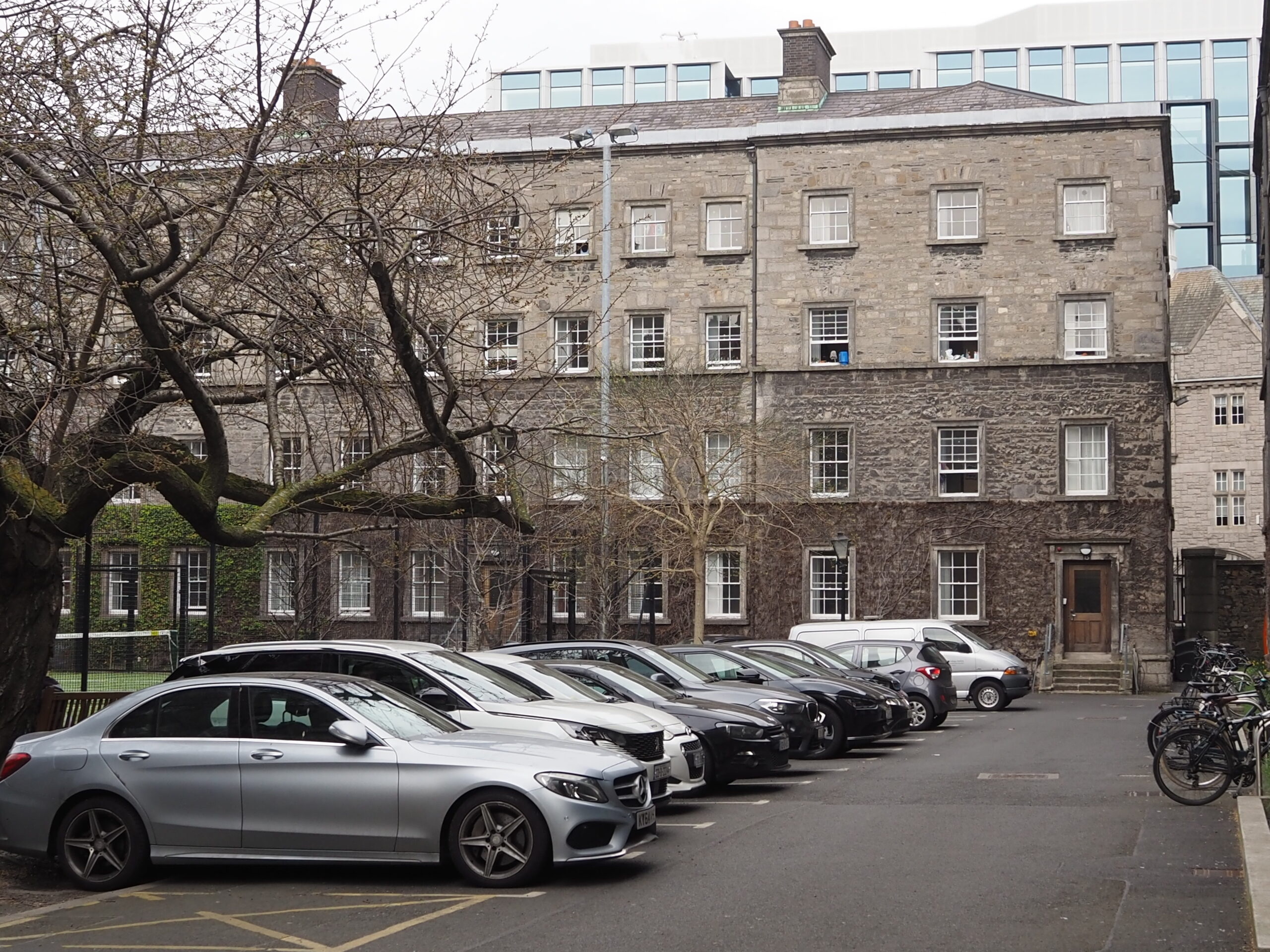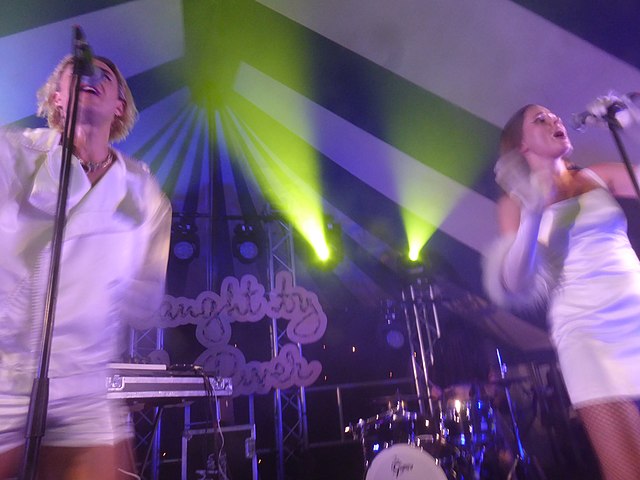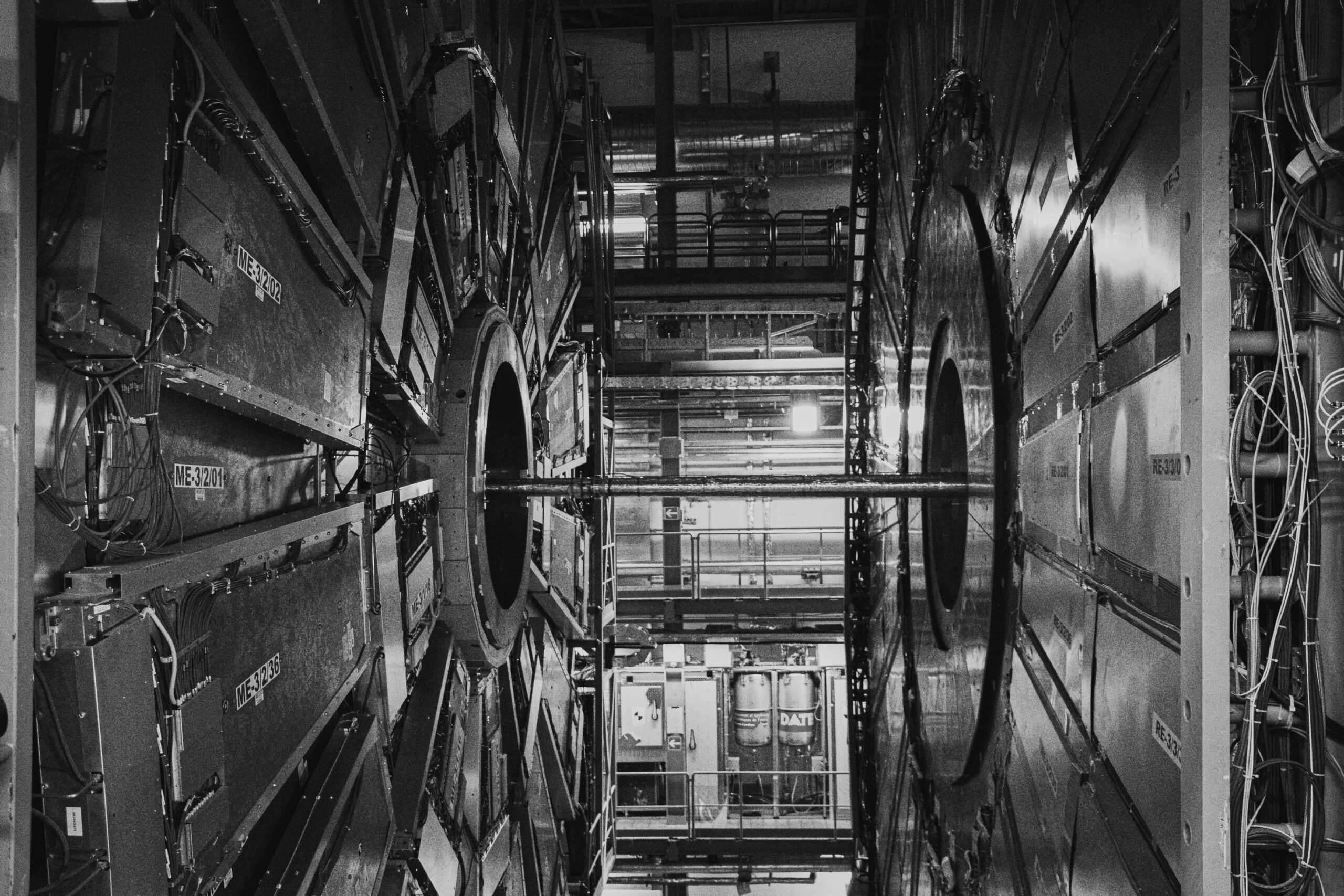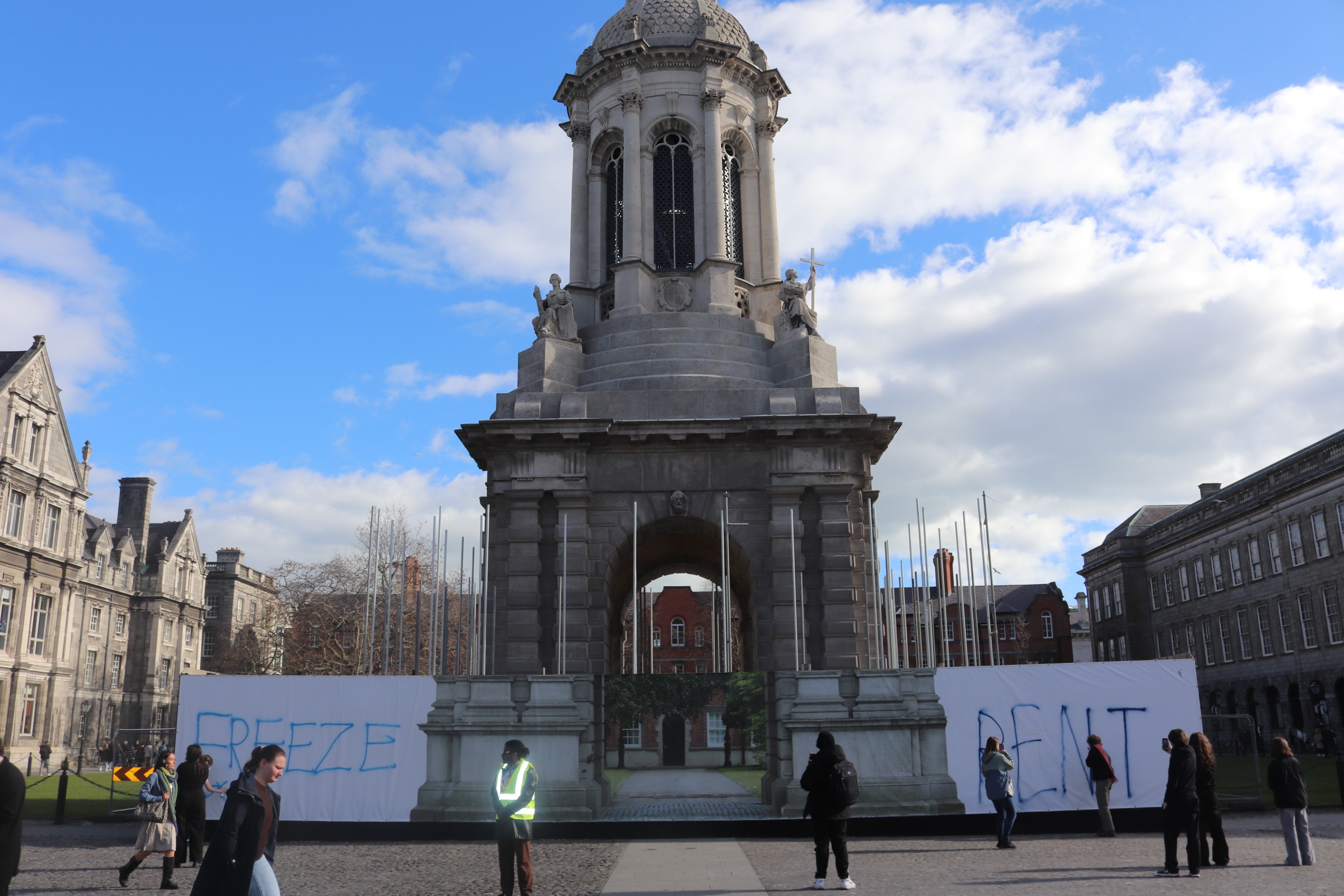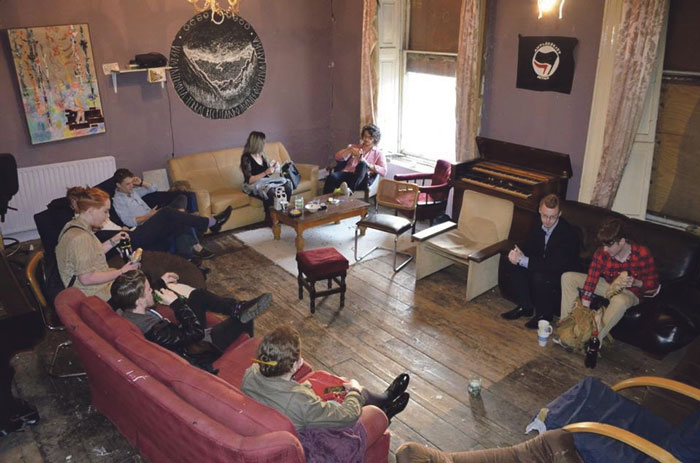
The current literary scene in Dublin is not one to be underestimated. A thriving community of writers, poets and spoken word performers at the helm of the creation of new and exciting experimental pieces and journals are dotted around the city. The challenge of joining these dots together and harnessing the literary energy that runs throughout the city is no mean feat, but one group has undertaken this task – an initiative known formally as Cave Writings. Radius sat down with D. Joyce-Ahearne, fourth-year English student, Chair of Trinity Publications and co-founder of the collective, to discuss the Cave community and its latest and most exciting project, Cave Paintings.
Launched in February of this year, Cave Writings was formed out of a need within Dublin for a creative and safe space for writers to come together and discuss their work. While the city plays host to multiple open mic and spoken word nights, they are heavily dependent on performance. There was an obvious gap that needed to be filled to welcome the process of writing rather than just the finished product. Speaking about the early stages of the project, Joyce-Ahearne noted: “What we wanted was a space rather than a night, so people could come, they could read work that wasn’t necessarily finished, so it doesn’t have to be performed. If they are working on things, they want feedback, they want to meet other people and see what they’re doing too.” And so the idea of the creative nomadic space that is the Cave was formed.
Beginning in KC Peaches, the regular nights quickly became successful, welcomed by writers, poets and performers from around the city. “It was such a bizarre set up really. So people would come, people would read, and we would give them free wine”, Joyce-Ahearne explained. But as the collective grew, it was decided that the initiative should take a slightly more relaxed direction away from the restrictions that were imposed by the venue itself. “We were there until about May/June. We then decided, because they sell alcohol and you couldn’t bring your own drink, that this needs more alcohol – that was basically what this needs!” So the collective made its first move to the Ink Factory on Wellington Quay, where it became more of a casual affair whilst staying true to an ethos that was not overly concerned with performance.
The ideas of one artist’s previous work became the basis for the other’s future pieces, creating a new art form that otherwise would not have existed without the merging of two wholly different disciplines
From the beginning, it was clear that, in terms of writing and its development, the Cave would not be hindered by limitations of any kind. Indeed, the Cave was often joined by writers from different disciplines, with science students often making an appearance to read their latest essays. Not even the basic format of the initiative was restricted. “We started sort of bopping around,” Joyce-Ahearne explained. “We did events outdoors in the Phoenix Park. We did ones in Lilliput Press in Stoneybatter. We did one in the Barricade Inn.” This all-inclusive attitude meant made it not surprising when the Cave teamed up with the Gum Collective, a group of Dublin-based visual artists with a broad skills set ranging from print, sculpture and assemblage to video, performance, animation and paint. “We wanted to kind of get as many different disciplines as possible, and visual arts was a big one for us,” Joyce-Ahearne continued. It was in this merging of writing with visual arts that the idea of Cave Paintings was formed. The event seeks to create links between two very different artistic communities that respond to the same stimuli around them.
“Cave Paintings came in the early summer. It was kind of in the hopes of how to better the project. We had what we wanted – we had a space, we had lots of regular writers who became the Cave writers for this project. We had a big community, there was lots going on. We were launching different journals … and we were like it would be great to have more artists, like visual artists.”
The project that formed as a result of this discovery involved the pairing of ten of the writers from the Cave with ten visual artists of varying specialities. The artists themselves became involved through the Gum Collective and presenters at the National College of Art and Design Graduate Exhibition. “We had printmakers, painters, sculptors and filmmakers… and we had ten writers, primarily poets, prose writers, sound poetry, spoken word and then cave poets, a really good mix on both side”, Joyce-Ahearne said. “The artists and writers were paired by myself and the two lads. We knew the writers really well at this stage, but we didn’t really know the artists at all. So we paired the ten of them up, and sent an email around, and everyone had all agreed to it. Basically they exchanged work, and the artist would respond in art, whatever their discipline was, and the writers would respond similarly.”
From chatting to Anna Walsh and Clare Marie Ryan, one of the pairs of writers and artists involved, it quickly became clear that very little restrictions were placed on the artists by the project. Indeed, the very essence of the initiative seems to be the way in which it is open to multiple interpretations and readings. Ryan explained to Radius that, for many of the artists involved, this would not have been an entirely new experience, proving how the very different art forms often gravitate towards each other: “In Singapore, I worked with a poet, and it became more than just illustrating a text. What comes out from it is like a different art form in itself.”
Ryan is a Dublin-based visual artist, who primarily uses the mediums of printmaking and drawing to explore the boundaries of narratives in her work. Currently, her artistic focus analyses the relationship between the traditional art of printmaking and the digital world. Her pairing with Walsh, a Dublin-based writer, illustrated the way in which Cave Paintings was as much about the forming of new interdisciplinary relationships and friendships, as about the final pieces themselves. Anna holds an MA in Creative Writing from UCD and has previously been published in the Bohemyth, Losslit, the Belleville Park Pages, Headstuff and Maudlin House.
We then decided, because they sell alcohol and you couldn’t bring your own drink, that this needs more alcohol
While both artists had very different responses to each other’s work, it is interesting to trace the similarities that they both found throughout the process. It is evident that involvement in such a project as Cave Paintings offered a definite focus that can often be difficult to establish for creators. When asked to reflect on the experience, it was this focus provided by the project that was its most notable quality. Walsh remarked: “It made the stimuli you’re responding to so explicit. It’s right there. It’s not just some random thing that you are thinking about. It focuses your work and it centres it better. I often find it hard to discipline myself, because I’m not in college anymore, so this project was great because it was something that I could work to, which had a definite end point.”
For Walsh, and for other writers involved, it was this visual element that became so fundamental to the development of their work throughout their Cave Paintings journey. This visual element justified words on a page as more than just mere ideas, but an art form that demanded interaction, and a response from other creators. While Ryan shared this same focus as Walsh throughout the course of the project, her experience of Cave Paintings was very different as a visual artist. Speaking directly of her time involved with the project, Ryan outlined her personal approach: “I printed the poems out and I drew pictures based on the poems from what I could see or imagine, then I cut out the words from the poem and stuck them out on the paper, so they would be exhibited next to the paper with the missing text… I really just saw it as a collaboration. It wasn’t just like I was just doing all the pictures, because I was using [Walsh’s] ideas.”
It is evident that both Walsh and Ryan owed the success of their work through Cave Paintings to a mutual respect of each other’s creative discipline. This respect extended to a greater understanding of the responsibility that both artists had to the other’s ideas. The recycling of ideas can be seen as the most exciting element of Cave Paintings, as the ideas of one artist’s previous work became the basis for the other’s future pieces, creating a new art form that otherwise would not have existed without the merging of two wholly different disciplines.
Together with the nine other pairs, both Walsh and Ryan’s work can be viewed in the Cave Painting exhibition, running next week – from November 16th to November 20th – in Molloy & Dowling on Kildare St, with an opening night on the 16th and a closing night on the 20th. Whilst the artwork will be displayed throughout the course of the week, readings from the writers will take place on the opening and closing nights.
Cave Paintings boasts an exciting new approach to literature and art in Dublin that hasn’t been explored before. Its appreciation of Dublin-based art makes it one of the city’s most exciting and invigorating creative projects at the present time and one that has been thoroughly rewarding for the organisers, writers and artists involved. And now, as the project moves beyond the Cave and into the public eye, it promises to be just as rewarding for its audience as well.
Correction: 12:02pm, Nov 13th, 2015
An earlier version of this article incorrectly referred to an artist involved in the project as Clare Marie, and on subsequent mentions as “Marie”. Her name is Clare Marie Ryan.
Correction: 1:07pm, Nov 13th, 2015
An earlier version of this article incorrectly referred to Anna Walsh, a writer involved in the project, as a Dublin writer. While she is based in Dublin, she is from Mullingar.

